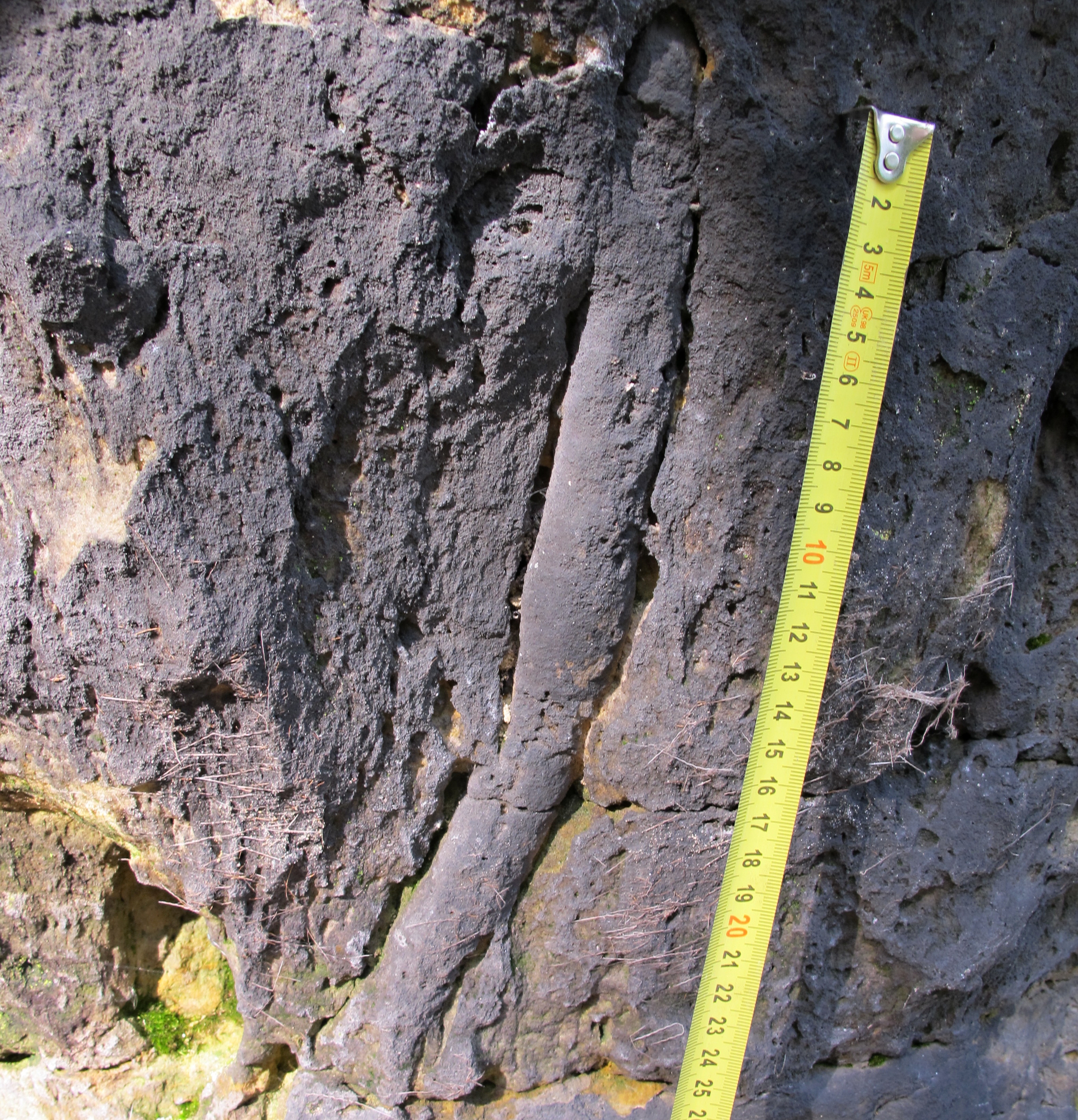Ophiomorpha on:
[Wikipedia]
[Google]
[Amazon]

 ''Ophiomorpha'' is an
''Ophiomorpha'' is an

 ''Ophiomorpha'' is an
''Ophiomorpha'' is an ichnotaxon
An ichnotaxon (plural ichnotaxa) is "a taxon based on the fossilized work of an organism", i.e. the non-human equivalent of an artifact. ''Ichnotaxa'' comes from the Greek ίχνος, ''ichnos'' meaning ''track'' and ταξις, ''taxis'' meaning ...
, usually interpreted as a burrow of an organism (specifically a crustacean) living in the near-shore environment. The burrow lining is more or less smooth on the inside, and densely to strongly mammalated or nodose on the outside, due to the packing of fecal pellets for support of the burrow. Branching is irregular but Y-shaped where present. It (particularly ''O. nodosa'') is often considered part of the Skolithos
''Skolithos'' (formerly spelled ''Scolithus'' or ''Skolithus'') is a common trace fossil ichnogenus that is, or was originally, an approximately vertical cylindrical burrow. It is produced by a variety of organisms in shallow marine environmen ...
ichnofacies
An ichnofacies is an assemblage of trace fossils that provides an indication of the conditions that their formative organisms inhabited.
Concept
Trace fossil assemblages are far from random; the range of fossils recorded in association is constra ...
, where it has occurred (i.e. nearshore environments) since the early Permian, though it (particularly ''O. rudis'') has also occurred in deep water settings (Nereites ichnofacies) since the Late Jurassic, such as well-oxygenated turbidites.
More generally ''Ophiomorpha ''and other crustacean-generated burrows first become prominent in the Jurassic.
See also
*Trace fossil
A trace fossil, also known as an ichnofossil (; from el, ἴχνος ''ikhnos'' "trace, track"), is a fossil record of biological activity but not the preserved remains of the plant or animal itself. Trace fossils contrast with body fossils, ...
* Ichnology
References
Burrow fossils {{trace-fossil-stub